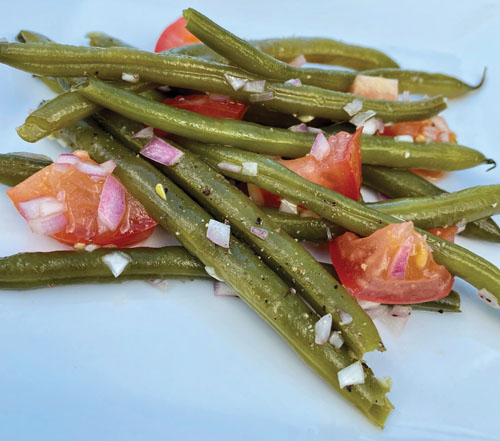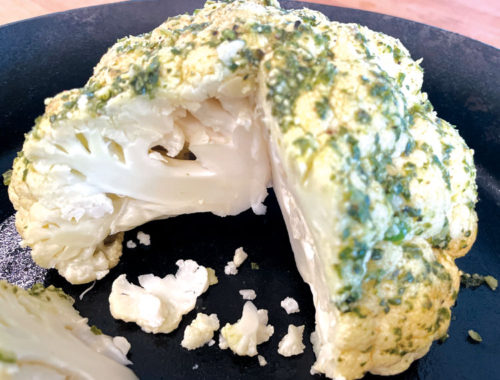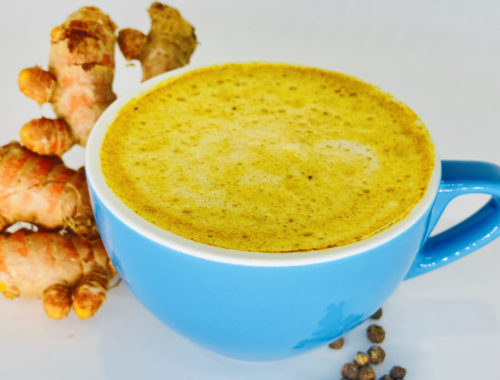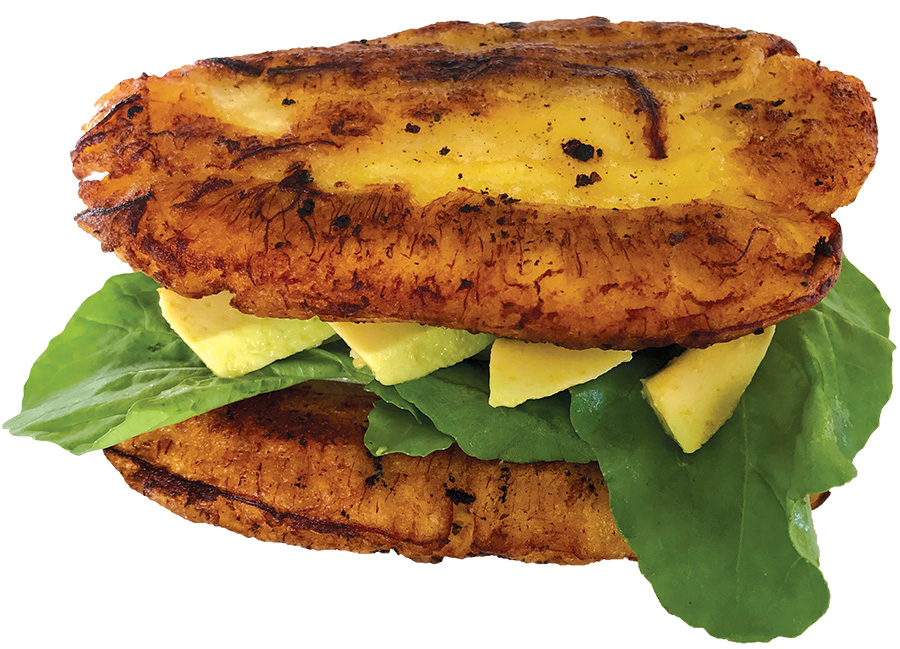
Local Foods: Going Bananas
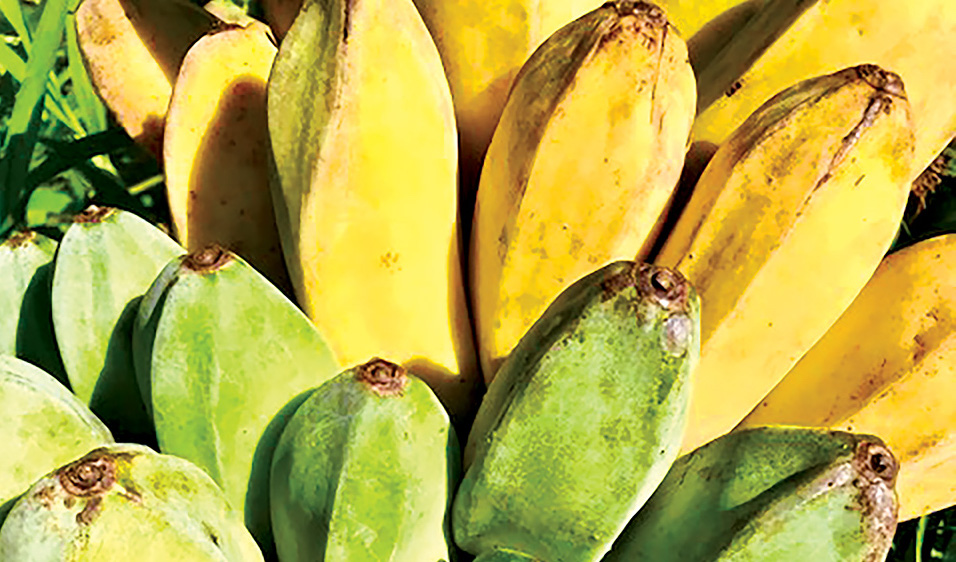
By Brittany P. Anderson
I used to think that all bananas were the same. Yellow skin, bland taste, mushy, and eaten on the go for breakfast. The Cavendish banana was all I had ever known. Chopping down the thick stalk of an Apple Banana, some 12 years ago, was the first time I had even laid eyes on a banana plant let alone tasted a true ripe banana.
Little did I know there are about 1,000 varieties of bananas in the world, with about half of the varieties bearing fruit while the rest are ornamental. Approximately 200 different varieties are grown in Hawai‘i!
Praying Hands, Lady Fingers, Ice Cream Banana, green striped A‘ea‘e, Cuban Red, Apple Banana—the list goes on for the amazing variety of bananas available here on Hawai‘i Island. Recently, at Island Naturals in Hilo, I came across a variety of banana eaten both green and yellow—the Saba.
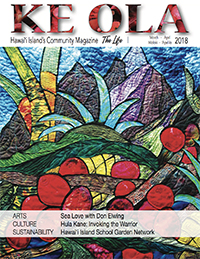
Saba bananas are popular in Philippine cuisine, and to my surprise, are cooked in both sweet and savory dishes. The Saba banana grows exceptionally well in Hawai‘i. They are massive plants that grow to around 25 feet tall. Fat and square, these bananas look very different than other types of cooking bananas.
I peeled back the yellow blocky fruit and took a bite. Their skin is thick and leathery in a deep golden shade of yellow. The taste was unlike any banana I had ever eaten! The ripe Saba retains a firm meaty texture and has tasting notes of peach, a slight tangy lemon, and butter. Slightly chewy, it has a great consistency for eating fresh off the bunch.
Bananas are marvelous plants—planting just one can create a whole forest. Bananas are cultivated from a rhizome most commonly called the corm. It is like a big bulb, and from that rhizome, stems grow outwards and form banana plants. The magic of the banana is that multiple stems can grow from the same corm, eventually turning just one rhizome into an intricate, delicious fruit-bearing network.
Banana plants aren’t trees even though they may seem like it. They’re more closely related to a turnip than they are a ‘ōhi‘a tree. The trunk of the banana plant is actually a tightly-wrapped stem made up of leaves, something I would have never noticed in the small patch of Apple Bananas in my yard.
The first hand of Saba didn’t last long. My newfound love created an insatiable appetite for more. Having only eaten bananas raw, the same way I’ve been eating them for years, cooking a banana in a savory dish was beyond my comprehension.
I flew through two more hands of Saba bananas, savoring the sweetness each time I devoured my morning banana. Bananas are full of beneficial nutrients like energy boosting carbohydrates, potassium, vitamin C, vitamin A, and iron. Sabas are low on the glycemic index, too. Eating a Saba, or in my case two to three, is actually a good thing.
I set my sights on a light-yellow hand with just a bit of green around the edges. Starchier and a touch less sweet, these would be the honorary first Sabas to widen my culinary world.
Prito Saging is the basis for what came next. In Tagalog prito means fried while saging means banana—literally fried bananas. Blending a little Puerto Rican tostones technique (smashing with a plate) makes this Prito Saging an unexpectedly perfect bread substitute. The crunchy sweetness of the fried Saba is delightful for a hearty sandwich, burger, or the most epic avocado toast.
Prito Saging Tostones Style—A Recipe
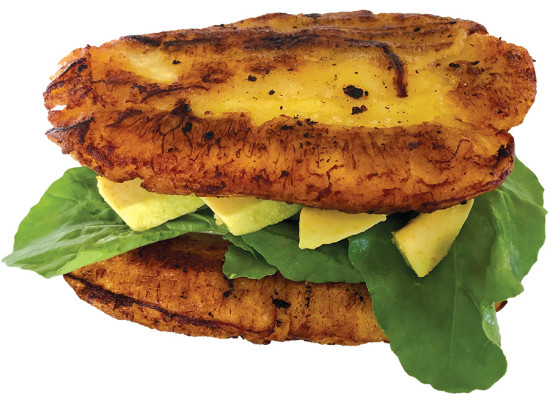
Saba banana bunch, peeled
Oil for frying, about 1/8 of an inch in the pan
Toppings of your choice
Heat oil on medium heat in frying pan. Place peeled Saba in oil. Turn after about 1 minute to slightly brown on each side. Banana should not burn. Once browned slightly on all flat sides, remove from pan and place on paper towel to absorb excess oil. One at a time, place Saba between two pieces of parchment paper. With the bottom of a plate, firmly press down on the Saba, flattening it. Return the flattened Saba to hot oil and fry for about 1 minute on each side, gently flipping with a spatula. Remove from oil and place on paper towel to absorb excess oil. Top with whatever you like. Eat immediately and enjoy! ❖
Photos by Brittany P. Anderson
